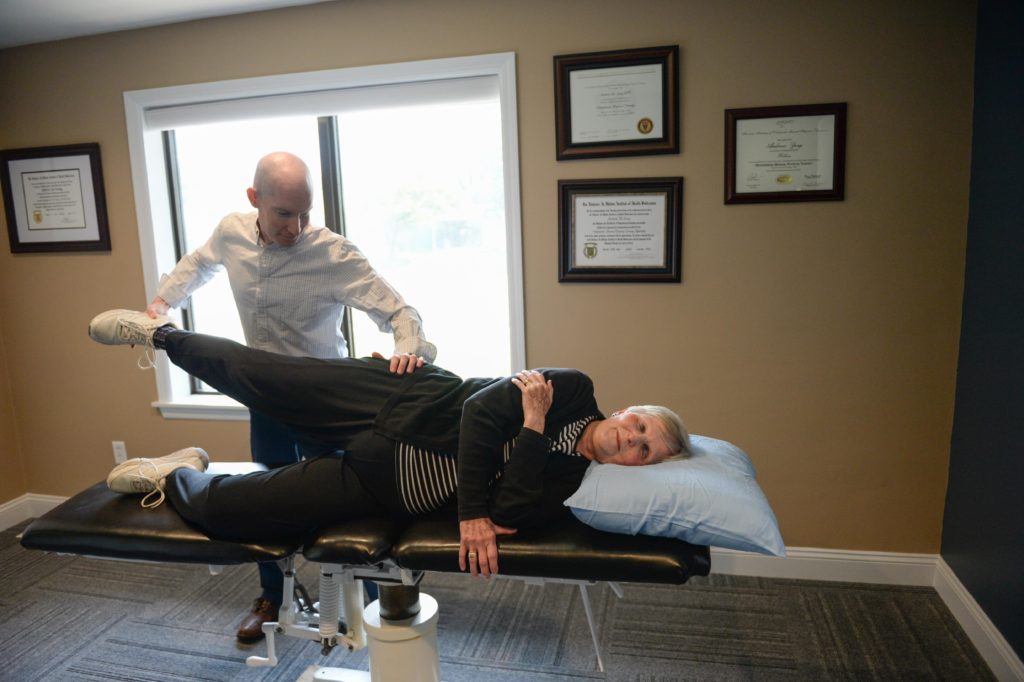People with a joint replacement often wonder if exercising is safe or not. The answer is absolutely YES with a few exceptions. Many worry about potentially damaging the replacement, but it is not as easy as people think. Let’s begin with focusing on the benefits of exercise before outlining possible concerns.
To start with, hopefully by now everyone knows the benefits of exercise. The benefits are numerous AND IF people want maximum function following a joint replacement, then exercise is basically mandatory. As anyone who has had a joint replacement knows their strength is impacted for a long time after the procedure. The only way to get that back is by working…HARD…and for a long time. Data suggests it can take over a year to regain strength following a knee or hip replacement. But if you did all that hard work to get it back, why stop? Keep going. Do not stop what has been working. Not only that but it is fine to push. That is how muscles get stronger. 
Next, the human body functions under a use it or lose it principle. If you want to be active for years to come following a joint replacement then it is probably wise to keep on moving…After all, why have the procedure if all you are going to do is sit around? Most have the procedure to get back to being active…and live with less pain. So stay active.
But what activity is safe?
Quite a lot actually. The list of things not to do is much shorter. There is some debate about whether it is safe to run after a hip or knee replacement. Many (a high percentage) will say absolutely do not attempt running. But there are starting to be some out there who will say maybe it is fine. But to achieve that will take EXTRA work to build strength, balance and endurance slowly. Patients are often told not to kneel after a knee replacement or cross one’s legs after a hip replacement. It is possible to kneel for some, but they will likely want a pad between the knee and floor for comfort. As for crossing one’s legs, that will depend on type of replacement. If a posterior approach was done then YES avoid, but it may be possible with an anterior approach.
But the number 1 thing to avoid is FALLING…anytime. Falling is a good way to cause damage. Beyond that exercise including golf, tennis, and pickleball can be resumed safely after 4-6 months or more depending on the person’s recovery process from the joint replacement. To achieve this, one must be prepared to take the rehab process seriously. But if one does, you will be able to get back to most every kind of activity you desire.
